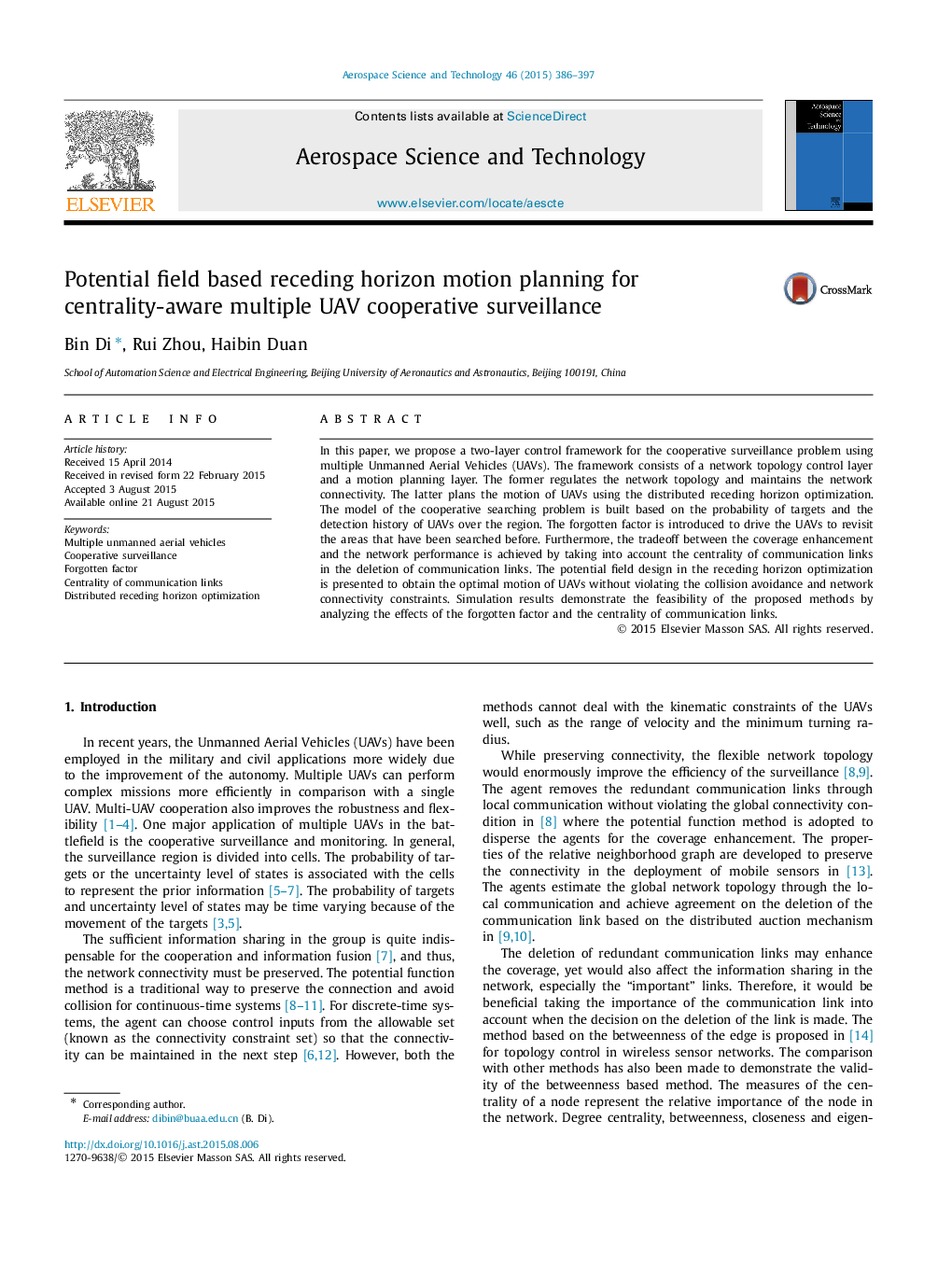| Article ID | Journal | Published Year | Pages | File Type |
|---|---|---|---|---|
| 8058883 | Aerospace Science and Technology | 2015 | 12 Pages |
Abstract
In this paper, we propose a two-layer control framework for the cooperative surveillance problem using multiple Unmanned Aerial Vehicles (UAVs). The framework consists of a network topology control layer and a motion planning layer. The former regulates the network topology and maintains the network connectivity. The latter plans the motion of UAVs using the distributed receding horizon optimization. The model of the cooperative searching problem is built based on the probability of targets and the detection history of UAVs over the region. The forgotten factor is introduced to drive the UAVs to revisit the areas that have been searched before. Furthermore, the tradeoff between the coverage enhancement and the network performance is achieved by taking into account the centrality of communication links in the deletion of communication links. The potential field design in the receding horizon optimization is presented to obtain the optimal motion of UAVs without violating the collision avoidance and network connectivity constraints. Simulation results demonstrate the feasibility of the proposed methods by analyzing the effects of the forgotten factor and the centrality of communication links.
Related Topics
Physical Sciences and Engineering
Engineering
Aerospace Engineering
Authors
Bin Di, Rui Zhou, Haibin Duan,
